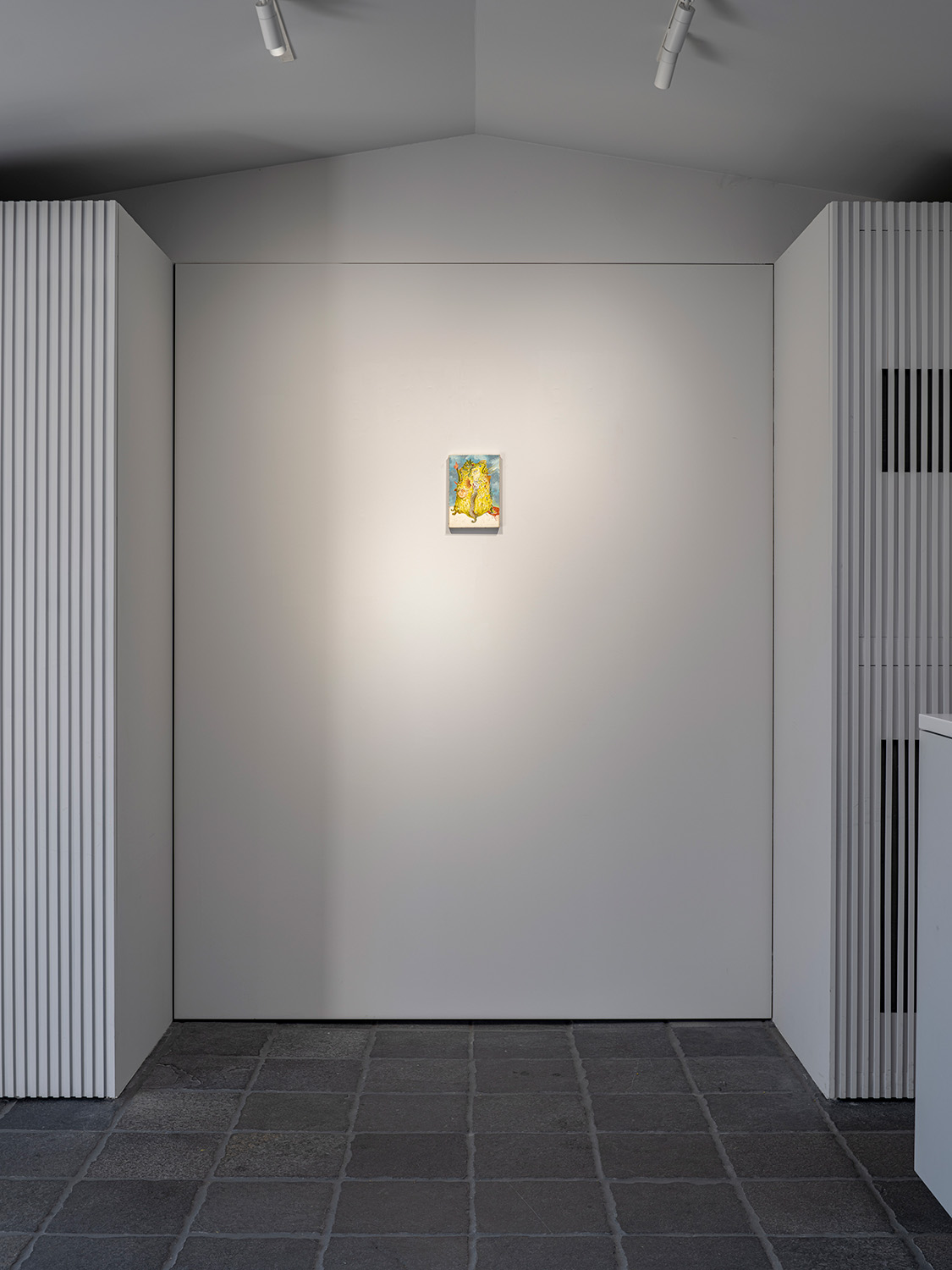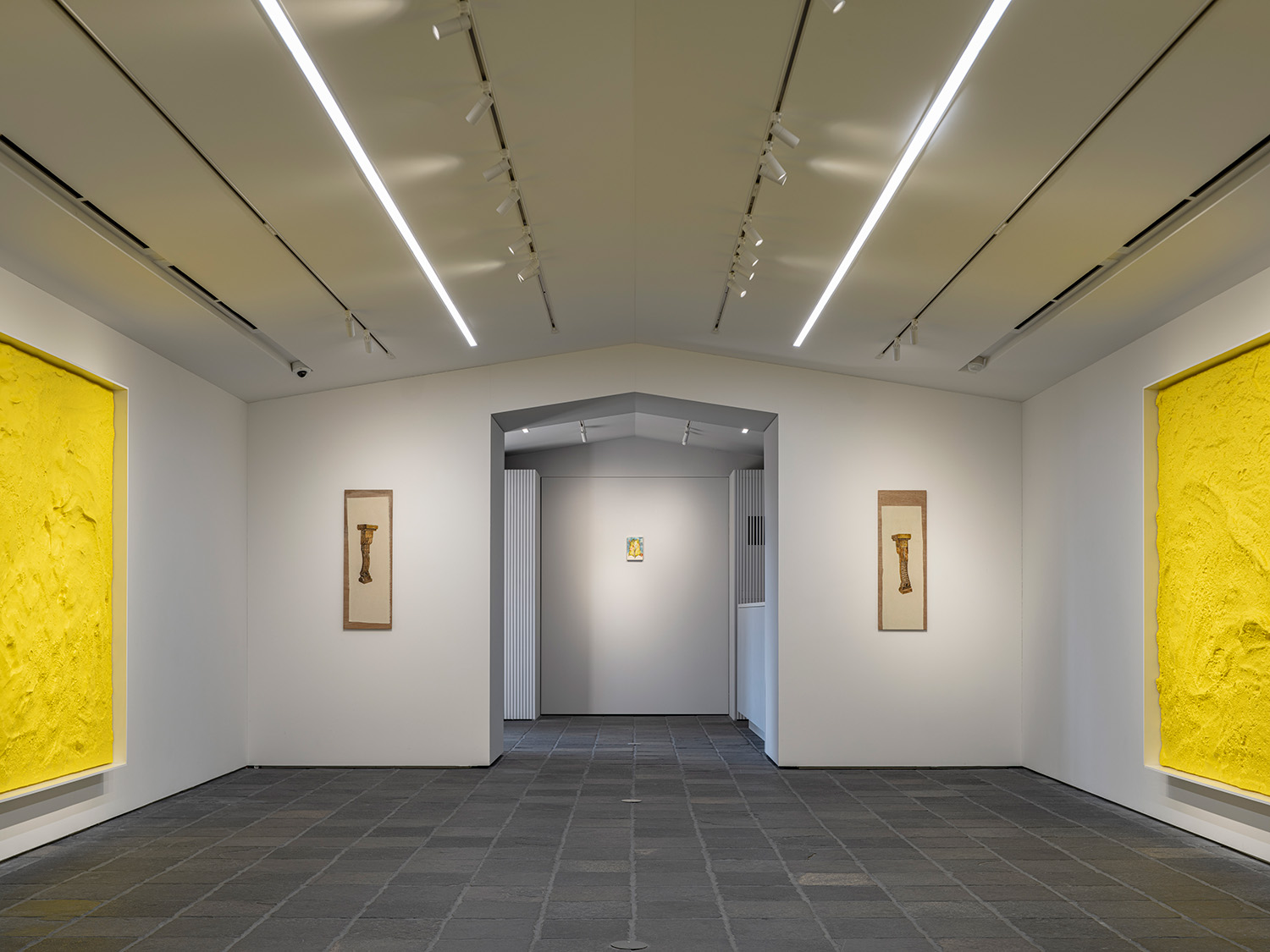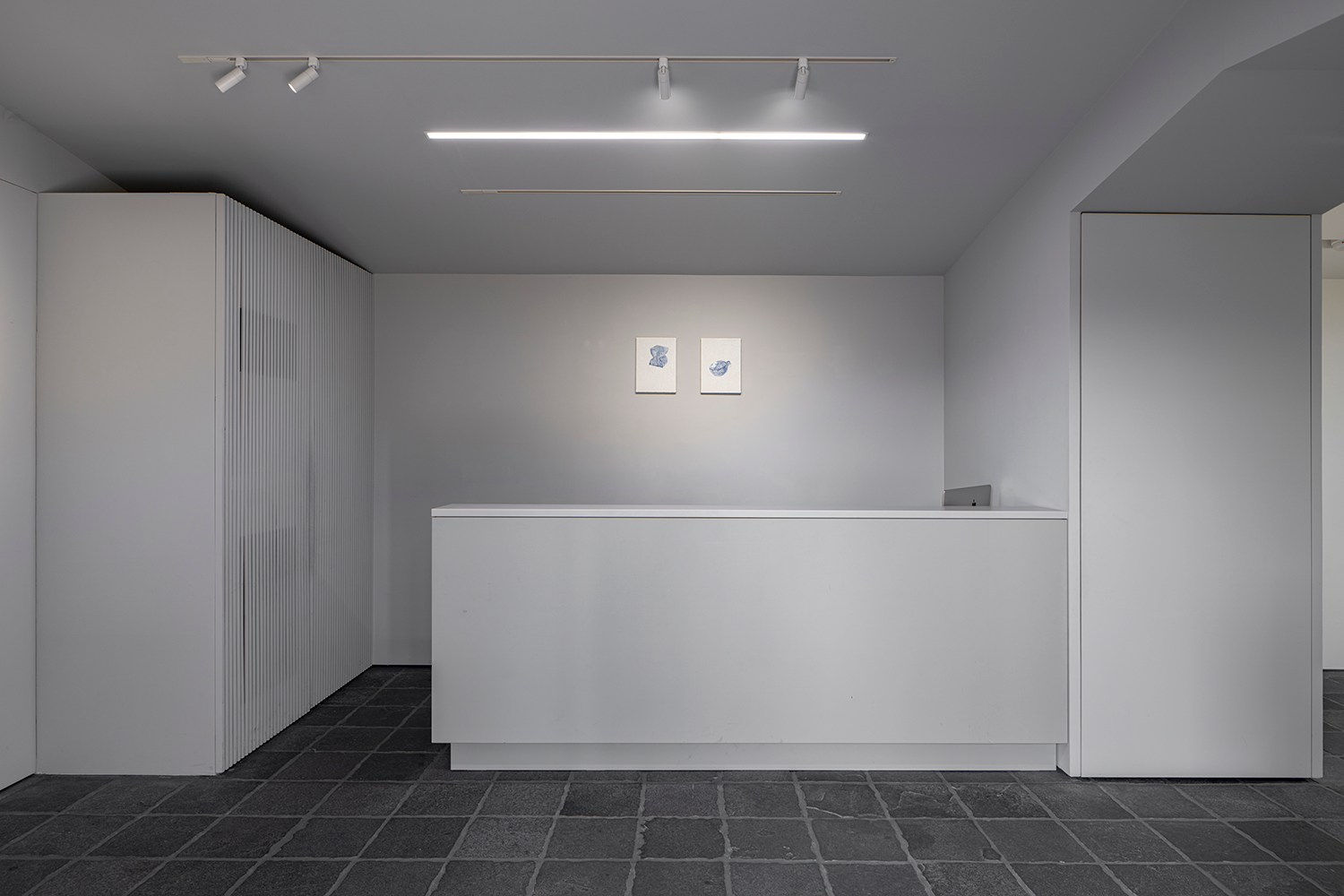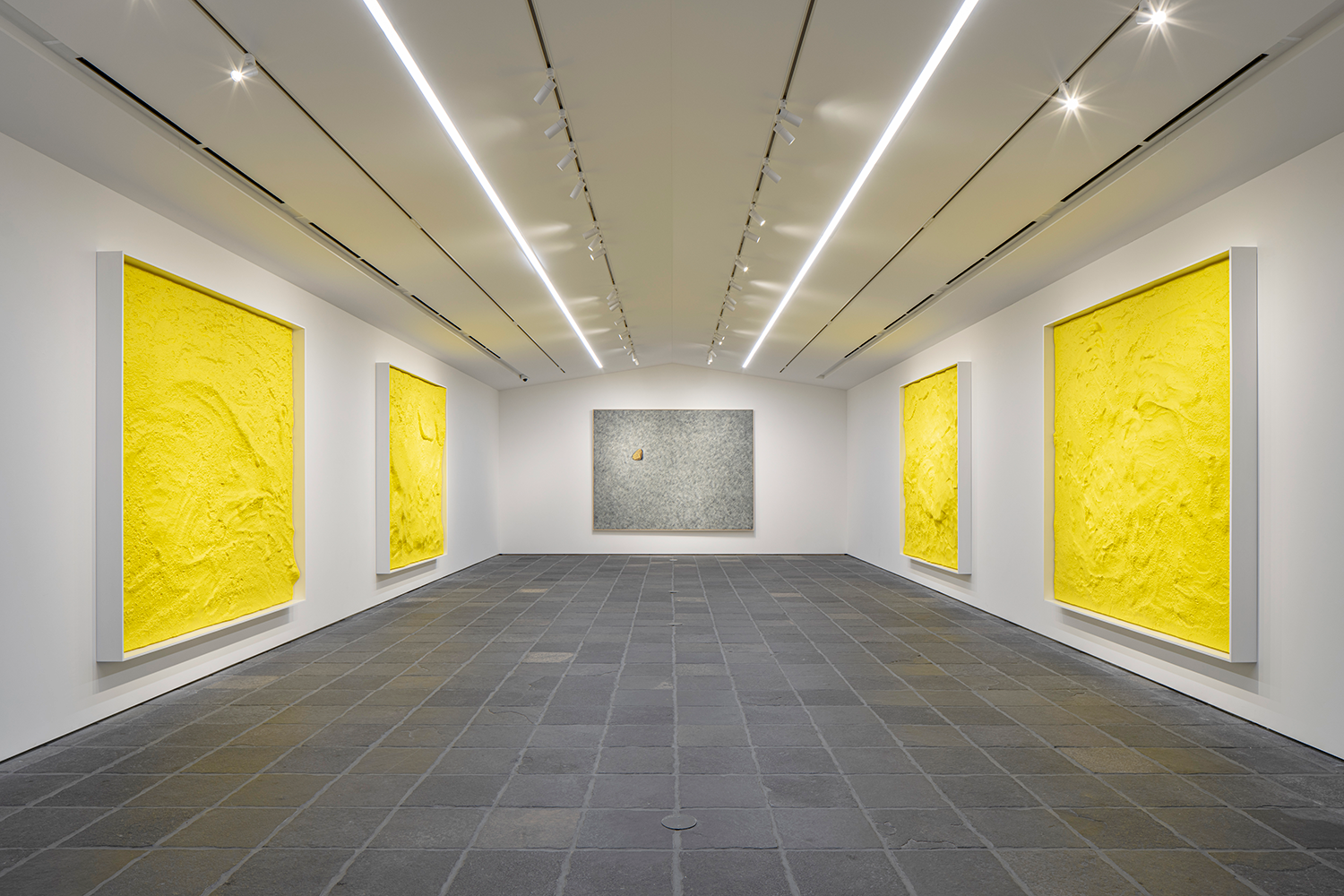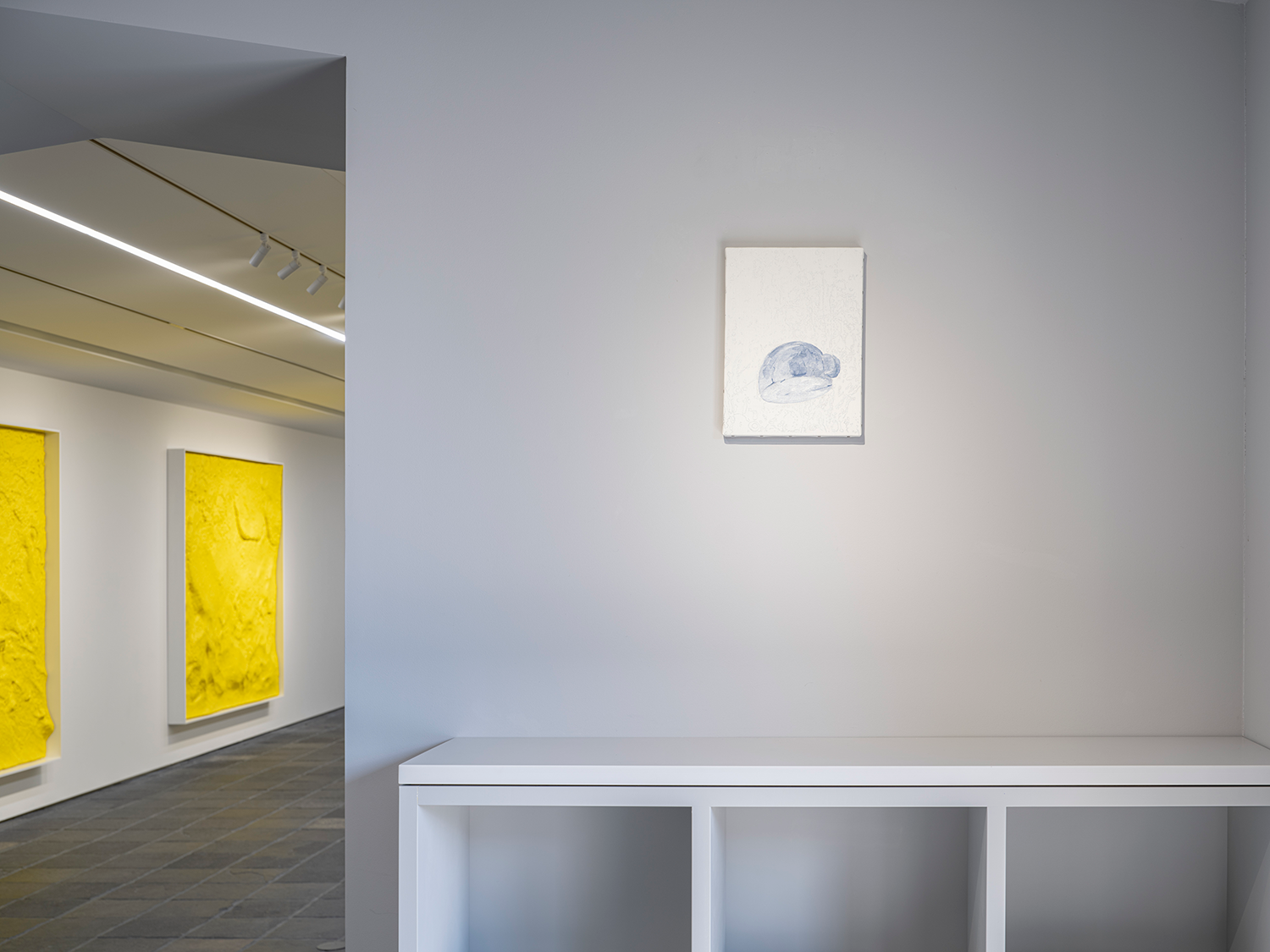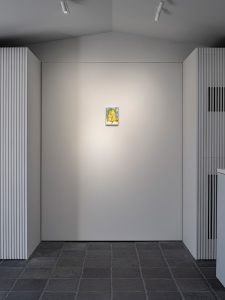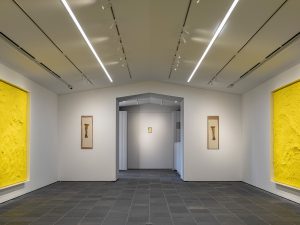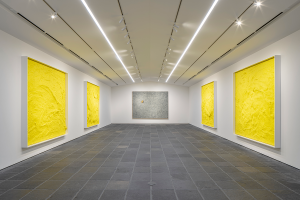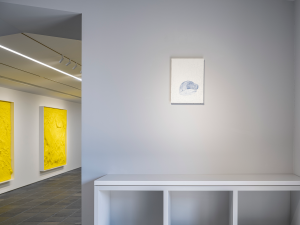LUNA COGNITA-Noboru Tsubaki's Paintings-1978,1986,2022-2023
Noboru Tsubaki
"Tsubaki, nous..." or, on the origin of paintings
Yasuyuki Nakai, Researcher of the National Museum of Art, Osaka
Noboru Tsubaki, always questions us " ". He poses intense situations to us.
It may seem like an exaggeration to leave the key term of this question with a blank space, to make the introduction of this text catching. However, I will be honest. I could not determine the sufficient word to complete it.
To go off topic, I wonder if you are familiar with the work Tu m', the last painting by Marcel Duchamp. The work was commissioned by Katherine Sophie Dreier, an important collector of Duchamp, to dress a long narrow space above a bookshelf in her home, and was created in 1918 as the first work for which Duchamp held a brush in five years. The year before 1918, in 1917, Duchamp presented the piece named Fountain. His method of signing a urinal and presenting it as art, later established a new genre called 'readymade', and caused a great revolution to the post-20th century art industry. A further two years back in 1915, Duchamp had started to work on a piece using a transparent sheet of glass as support, and depicting imagery using metallic materials (finished incomplete in 1923). So, considering Duchamp's career as an artist, 1918 was a year that could be taken as even a sin towards Duchamp, who had not only no longer needed to create oil paintings, but was exploring a new field of expression. This was the reason some ironic critics make the claim that this work has a hidden meaning of "Tu m'ennuise" (You bore me), by filling the unspoken part of the title with the word "ennuise". (1)
Let's return to the main subject. Noboru Tsubaki said he will be presenting a painting in this solo exhibition. Tsubaki made the judgment that it was necessary to revisit again, the expressive method, claimed that Duchamp secretly murmured to "bore" him at the beginning of the 20th century. One critic has presented an interesting perspective regarding the origin of paintings; that the reason why the human ancestors painted game (animals) that sustained their life in the depths of dark caves, may have been to express gratitude to the creator of this universe, for creating them in the world (2). In other words, it is an interesting idea, that maybe cave walls serve the function of communicating with God. There would likely have been guidance by someone with the role of a shaman, encouraging marking imagery in such dark places. Or perhaps the painter of these images themselves also played the role of a shaman. Like this, stretching our imagination around the origin of paintings, leads the conversation to primordial religious behaviors of humankind.
Once again, back to the main topic - we are in no way familiar with Noboru Tsubaki's paintings. For myself, the first work of Tsubaki I can say that I really engaged with was Fresh gasoline (1989). I actually have never seen this work in real life. However, in the beginning of the 90s, I discovered this artwork of abnormal form inside limited resources, and as if to see a fantasy, I was sharing time and space with this giant piece. Let me trace this virtual memory. The giant artwork of undefined form, covered with a glistening yellow, was there in an exhibition space with the side facing the road all made of glass. The work carried a complex expression, as if to image an organ governing the functions of an advanced creature, like the human brain. And by sharing the same space with this giant artwork, I came to understand the existence of the self that was becoming a part of this organ, as a structure that illustrated the brain-only theory ('Yuinoron' by Takeshi Yoro). If I look again at the picture of the same artwork now, the form of the numerous thin branch-like protruding shapes, like tentacles reaching out from the yellow organ, catches my attention. It perhaps illustrates the conceptional phenomena triggered by the organ, materialising and bonding with the external world.
By the way, this work would be categorised as a sculpture from its external qualities. However, I wonder if it is too weak an argument to make, to say that if one completely ignores the texture of the work's composing material, from the point that it is coloured in yellow, and also that only the shape as a silhouette is what gives the image of an organ, I interpret this as a painting in the shape of a three-dimensional form. Of course, whatever this work is categorised as is not the problem. However, I hear that Tsubaki's early paintings that will be exhibited, state to be 'Mono-ha like paintings'. I insist; this kind of categorisation cannot exist. There is no space to begin explaining the definition of 'Mono-ha' now so I will not, but I assume Noboru Tsubaki has applied some kind of gimmick here. We must be readily prepared.
(1) Yoshiaki Tono "The last painting" - Marcel Duchamp, 1977, Bijutsu Shuppan-sha, page 71.
(2) Yusuke Nakahara "What humans saw in the depths of caves" - Why Humans Paint, 2001, Film Art, Inc., pages 206-217.
Noboru Tsubaki, Contemporary Artist
Born in Kyoto, 1953. Graduated the Faculty of Fine Arts, Kyoto City University of the Arts. Professor of Kyoto University of the Arts. Associate professor of Tokyo University of the Arts. He exhibited Fresh gasoline at AGAINST NATURE: JAPANESE ART IN THE EIGHTIES, San Francisco Museum of Modern Art in 1989. Participated in the 45th Venice Biennale 'Aperto' (1993). His giant inflatable grasshopper "Insect World - Grasshopper" was presented at the Yokohama Triennale 2001. Solo exhibitions include UN BOY based on a post-9.11 world at Art Tower Mito (2003), Noboru Tsubaki 2004-2009 GOLD/WHITE/BLACK at The National Museum of Modern Art, Kyoto (2009), Noboru Tsubaki "PREHISTORIC_PH" Kirishima Open-air Museum (2012). Director of Sakate + Hishio Project in 2013 and Shodoshima Future Project in 2016 as part of the Setouchi Triennial, Aomori Triennale 2017, and ARTISTS' FAIR KYOTO since 2018.
- Title
- LUNA COGNITA-Noboru Tsubaki's Paintings-1978,1986,2022-2023
- Dates
- 2023/02/26-2023/04/02
- Opening party
- 2023/2/26 Sun. 17:00-
- Talk event
- 2023/3/4 Sat. 18:30-
Noboru Tsubaki×Kazuki Takakura - Artists
- Noboru Tsubaki





